From Continuous Integer-Order to Fractional Discrete-Time: A New Computer Virus Model with Chaotic Dynamics
Abstract
1. Introduction
2. Preliminaries and Algorithms
2.1. Preliminaries
2.2. Algorithms
- 0–1 Test for Chaos: [20] This binary diagnostic tool is used to distinguish between regular and chaotic dynamics. For a given time series , the test constructs the following trajectories:where c is a randomly chosen constant in . If the trajectory is bounded, the system is regular; if it behaves like Brownian motion, the system is chaotic.
3. Modeling
4. Dynamics of the Fractional-Order Discrete System
4.1. Commensurate Case
4.1.1. Dynamics of the FDCV Model with Variation in the Parameter
4.1.2. Dynamics of the FDCV Model with Variation in the Fractional Order
4.2. Incommensurate Case
4.2.1. Dynamics of the FDCV Model with Variation in
4.2.2. Dynamics of the FDCV Model with Variation in
5. Conclusions and Future Directions
Author Contributions
Funding
Institutional Review Board Statement
Informed Consent Statement
Data Availability Statement
Conflicts of Interest
References
- Szor, P. The Art of Computer Virus Research and Defense; Addison-Wesley Education Publishers Inc.: New York, NY, USA, 2005. [Google Scholar]
- Cohen, F. Computer viruses: Theory and experiments. Comput. Secur. 1987, 6, 22–35. [Google Scholar] [CrossRef]
- Piqueira, J.R.C.; Araujo, V.O. A modified epidemiological model for computer viruses. Appl. Math. Comput. 2009, 213, 355–360. [Google Scholar] [CrossRef]
- Yang, X.; Yang, L.X. Towards the epidemiological modeling of computer viruses. Discret. Dyn. Nat. Soc. 2012, 2012, 259671. [Google Scholar] [CrossRef]
- Yang, L.X.; Yang, X.; Zhu, Q.; Wen, L. A computer virus model with graded cure rates. Nonlinear Anal. Real World Appl. 2013, 14, 414–422. [Google Scholar] [CrossRef]
- Yuan, H.; Chen, G. Network virus-epidemic model with the point-to-group information propagation. Appl. Math. Comput. 2008, 206, 357–367. [Google Scholar] [CrossRef]
- Wu, G.C.; Baleanu, D. Discrete fractional logistic map and its chaos. Nonlinear Dyn. 2014, 75, 283–287. [Google Scholar] [CrossRef]
- Edelman, M.; Macau, E.E.; Sanjuan, M.A. Chaotic, Fractional and Complex Dynamics: New Insights and Perspectives; Springer: Berlin/Heidelberg, Germany, 2018. [Google Scholar]
- Zeng, J.; Chen, X.; Wei, L.; Li, D. Bifurcation analysis of a fractional-order eco-epidemiological system with two delays. Nonlinear Dyn. 2024, 112, 22505–22527. [Google Scholar] [CrossRef]
- El-Shahed, M.; Moustafa, M. Dynamics of a fractional-order eco-epidemiological model with two disease strains in a predator population incorporating harvesting. Axioms 2025, 14, 53. [Google Scholar] [CrossRef]
- Karaoğlu, E. On the Stability Analysis of a Fractional-Order Epidemic Model Including General Forms of Nonlinear Incidence and Treatment Functions. Commun. Fac. Sci. Univ. Ankara Ser. A1 Math. Stat. 2024, 73, 285–305. [Google Scholar] [CrossRef]
- Narwal, Y.; Rathee, S. Fractional order mathematical modeling of lumpy skin disease. Commun. Fac. Sci. Univ. Ankara Ser. A1 Math. Stat. 2024, 73, 192–210. [Google Scholar] [CrossRef]
- Kahouli, O.; Zouak, I.; Abu Hammad, M.; Ouannas, A.; Ayari, M. On an incommensurate chaotic fractional discrete model of a computer virus: Stabilization and synchronization. AIMS Math. 2025, 10, 19940–19957. [Google Scholar] [CrossRef]
- Abu Hammad, M.; Zouak, I.; Ouannas, A.; Grassi, G. Fractional Discrete Computer Virus System: Chaos and Complexity Algorithms. Algorithms 2025, 18, 444. [Google Scholar] [CrossRef]
- Kahouli, O.; Zouak, I.; Ouannas, A.; Abidi, I.; Bahou, Y.; Elgharbi, S.; Chaabane, M. Control and synchronization of chaos in some fractional computer virus models. Asian J. Control 2025, 27, 1–9. [Google Scholar]
- Kahouli, O.; Zouak, I.; Hammad, M.A.; Ouannas, A. Chaos, control, and synchronization in discrete-time computer virus system with fractional orders. AIMS Math. 2025, 10, 13594–13621. [Google Scholar]
- Abdeljawad, T. On Riemann and Caputo fractional differences. Comput. Math. Appl. 2011, 62, 1602–1611. [Google Scholar] [CrossRef]
- Atici, F.M.; Eloe, P. Discrete fractional calculus with the nabla operator. Electron. J. Qual. Theory Differ. Equ. 2009, 2009, 62. [Google Scholar] [CrossRef]
- Anastassiou, G.A. Principles of Delta Fractional Calculus on Time Scales and Inequalities. Math. Comput. Model. 2010, 52, 556–566. [Google Scholar] [CrossRef]
- Gottwald, G.A.; Melbourne, I. The 0–1 test for chaos: A review. Chaos Detect. Predict. 2016, 915, 221–247. [Google Scholar]
- He, S.; Sun, K.; Wang, H. Complexity Analysis and DSP Implementation of the Fractional-Order Lorenz Hyperchaotic System. Entropy 2015, 17, 8299–8311. [Google Scholar] [CrossRef]
- Shen, E.; Cai, Z.; Gu, F. Mathematical foundation of a new complexity measure. Appl. Math. Mech. 2005, 26, 1188–1196. [Google Scholar] [CrossRef]
- Yang, L.X.; Yang, X. A new epidemic model of computer viruses. Commun. Nonlinear Sci. Numer. Simul. 2014, 19, 1935–1944. [Google Scholar] [CrossRef]
- Wu, G.C.; Baleanu, D. Jacobian matrix algorithm for Lyapunov exponents of the discrete fractional maps. Commun. Nonlinear Sci. Numer. Simul. 2015, 22, 95–100. [Google Scholar] [CrossRef]


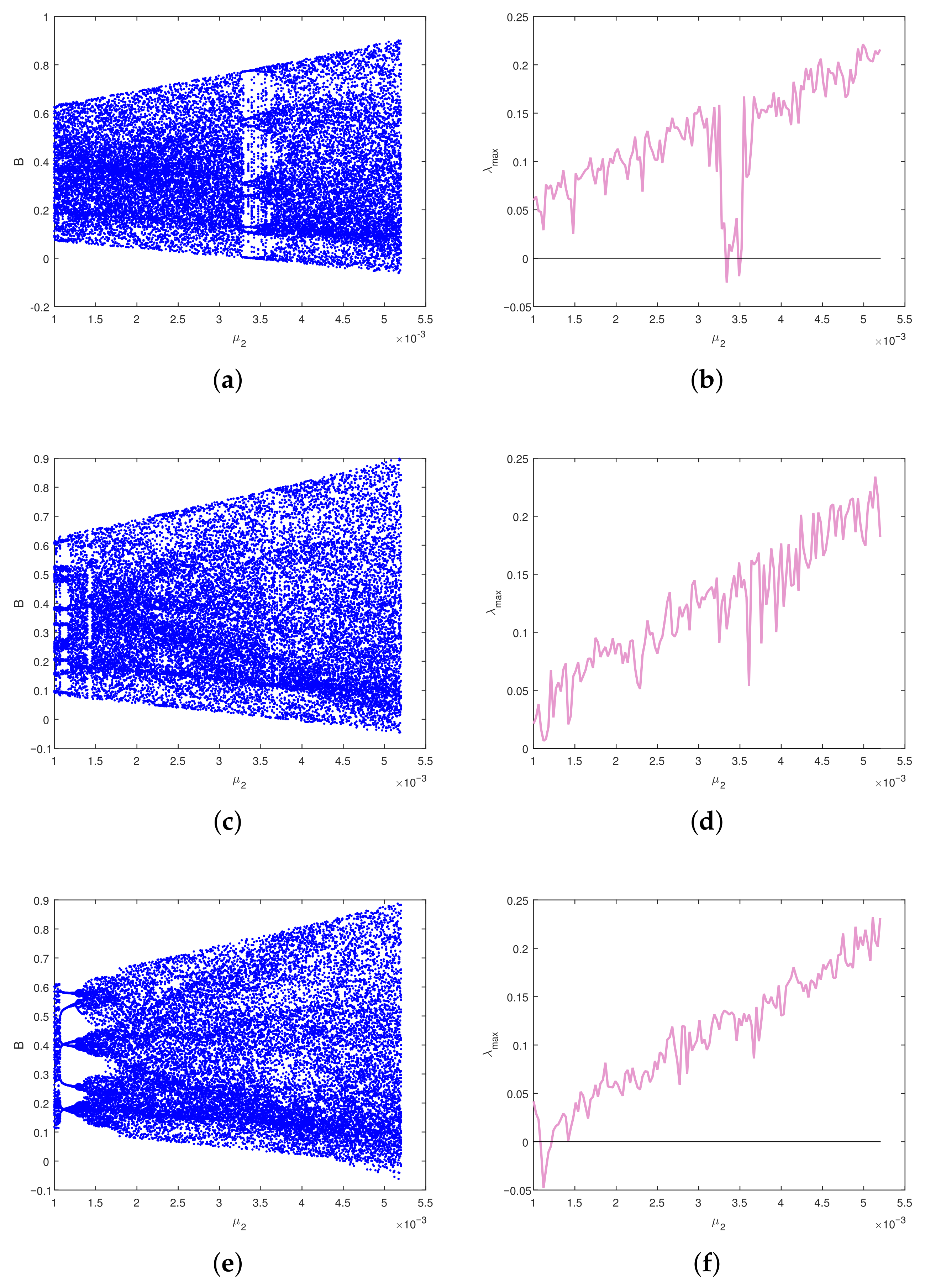
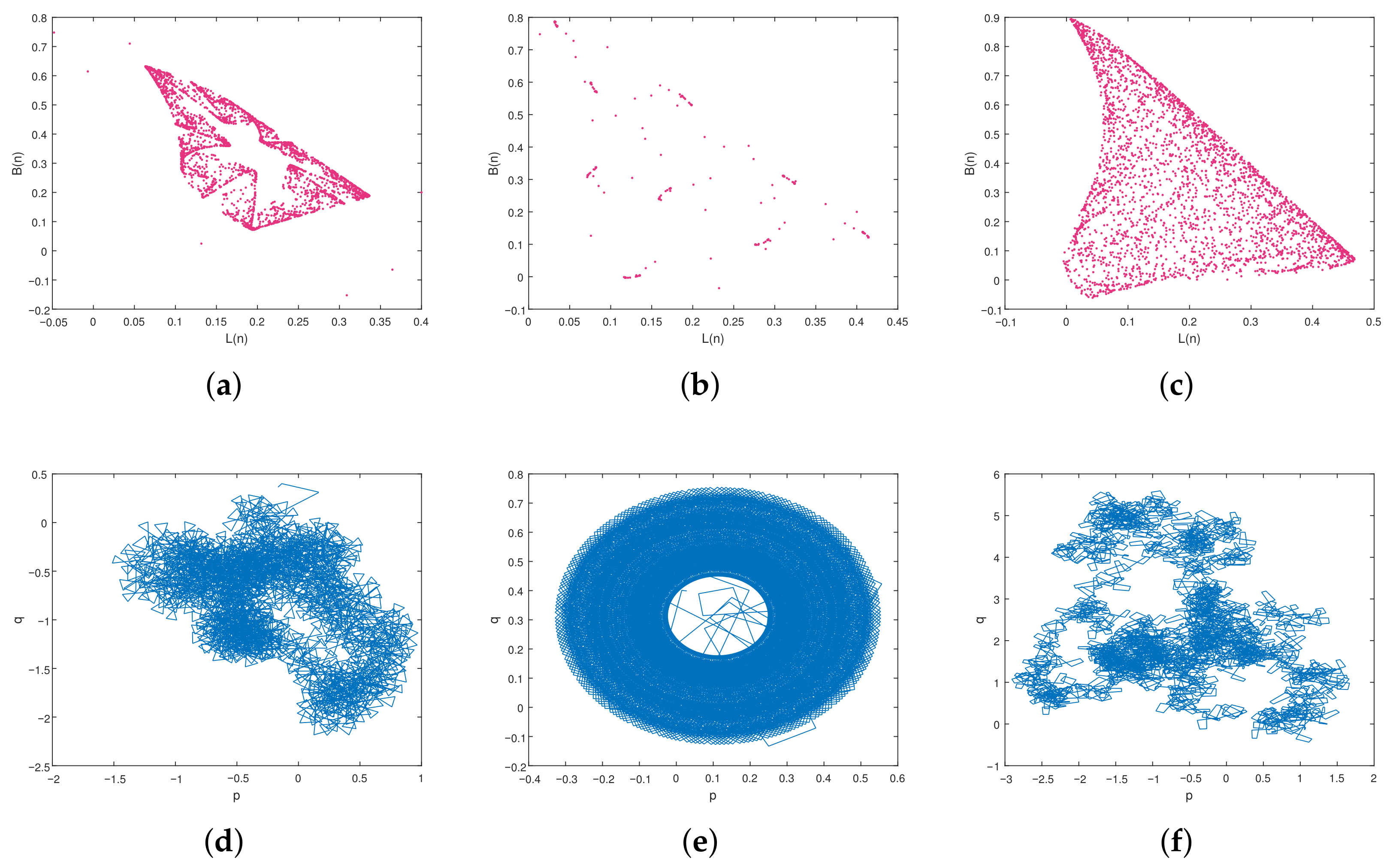

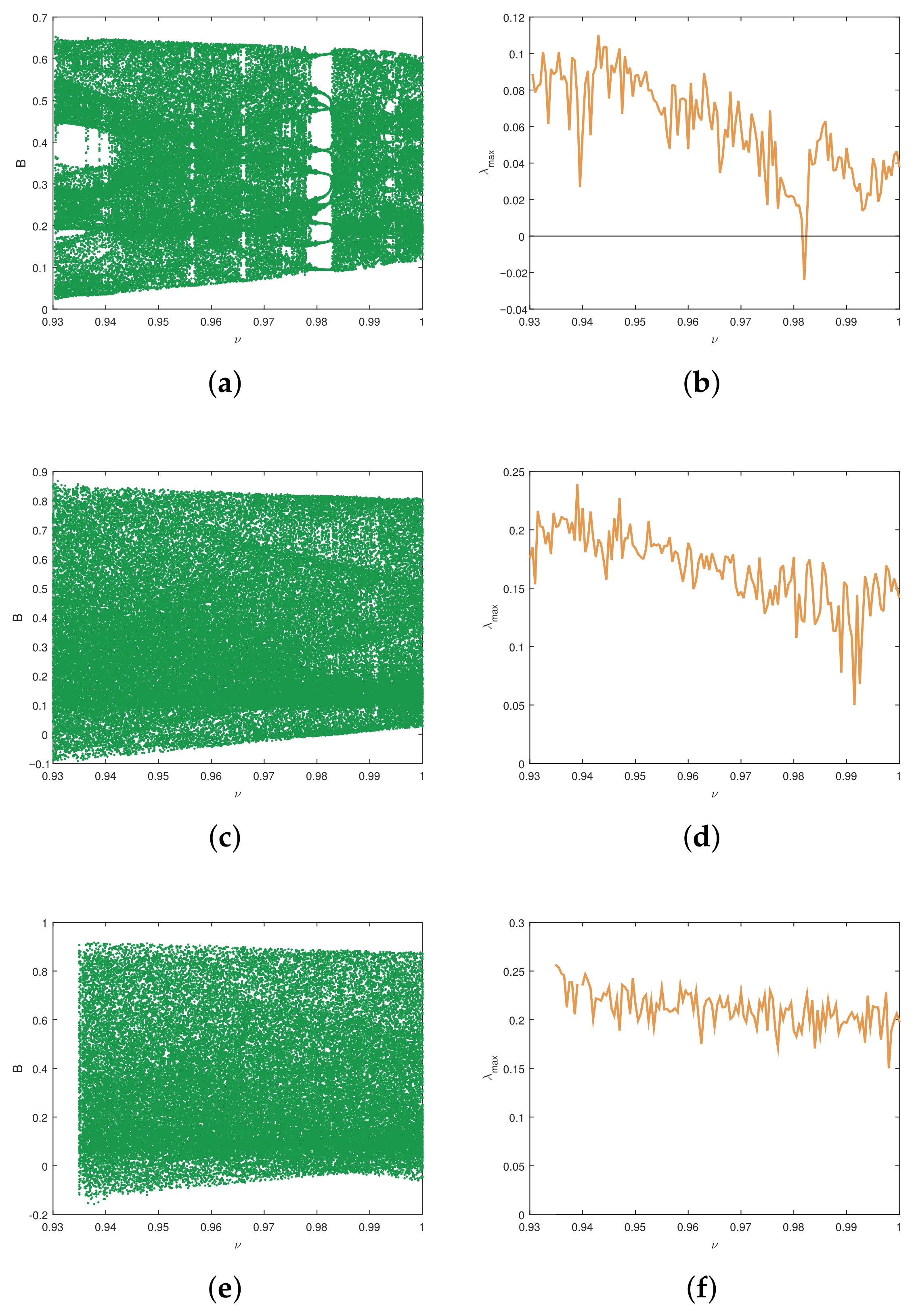
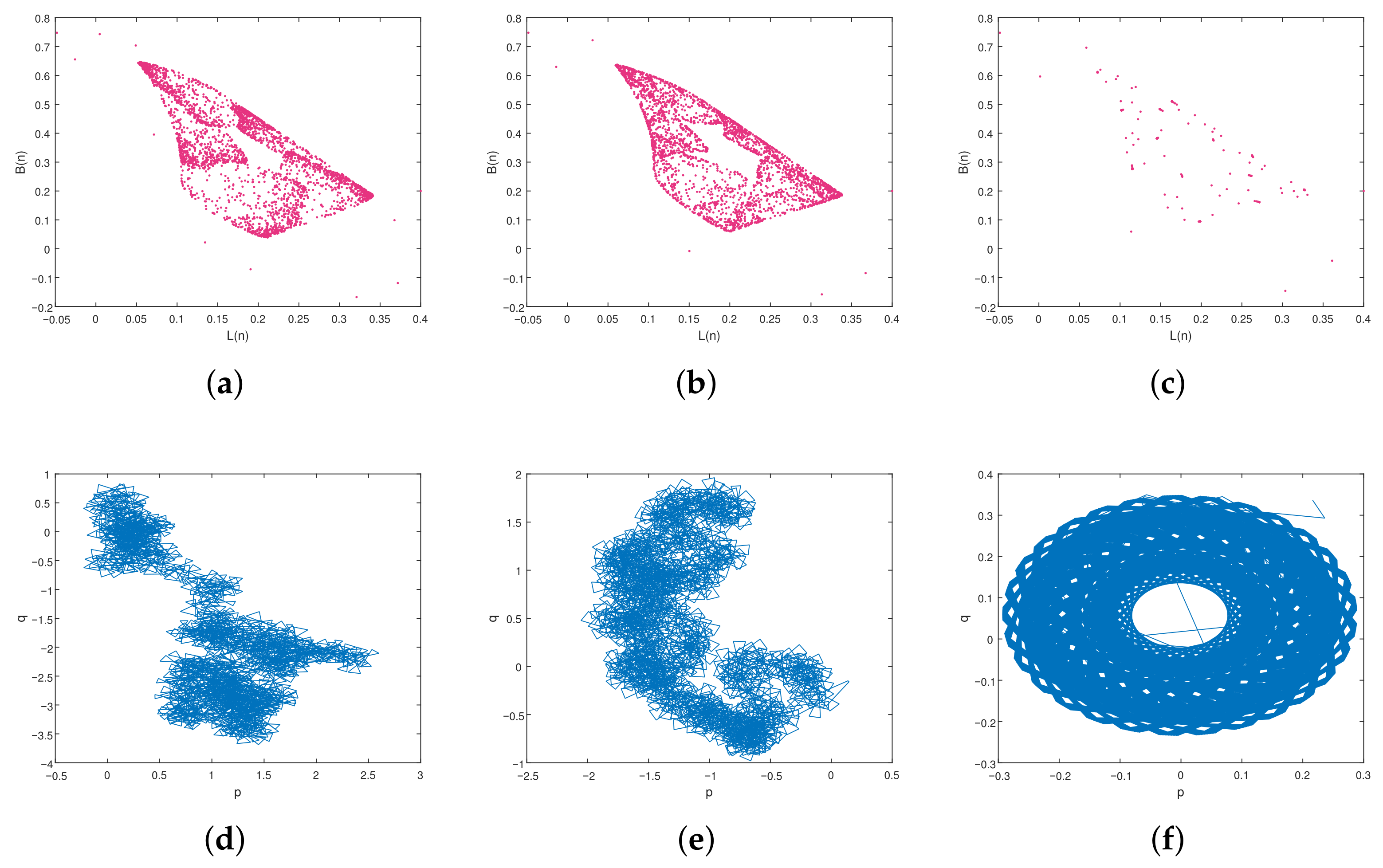

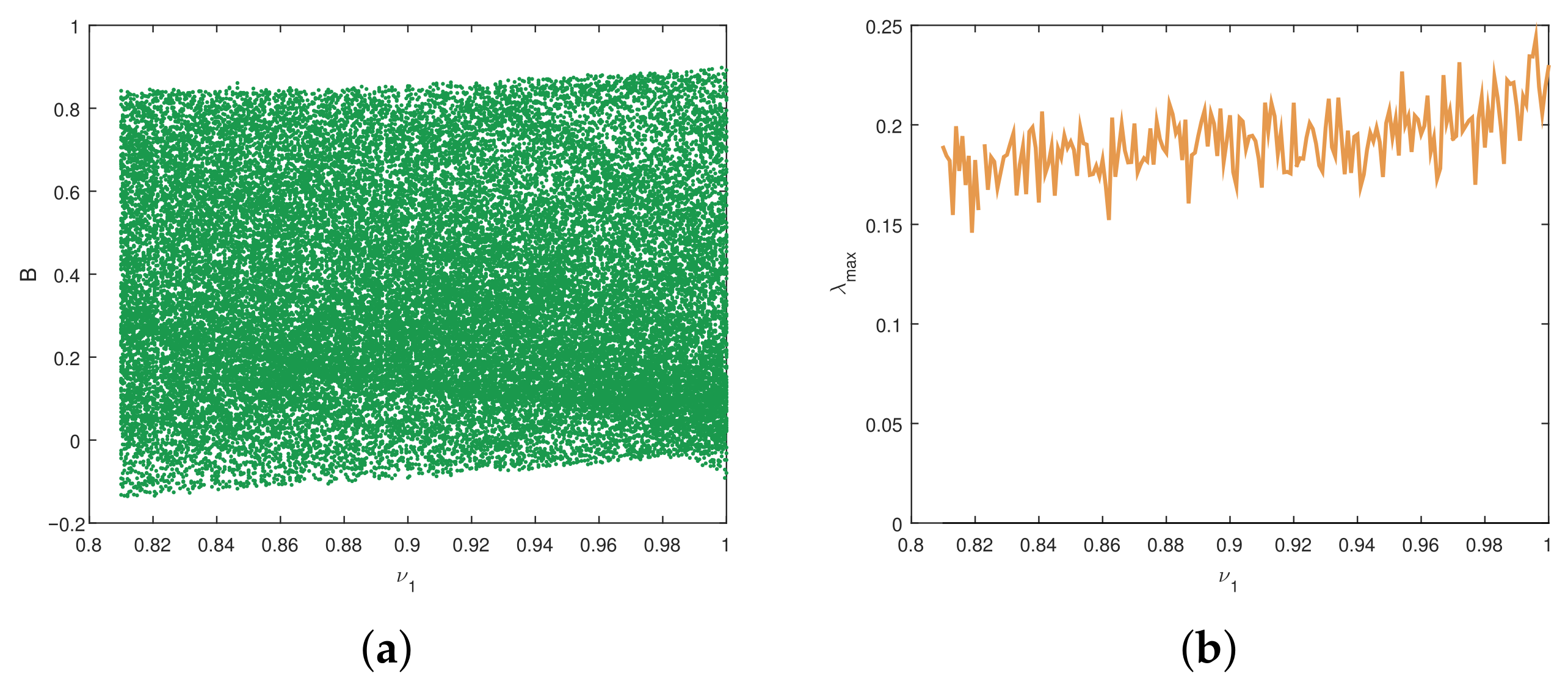
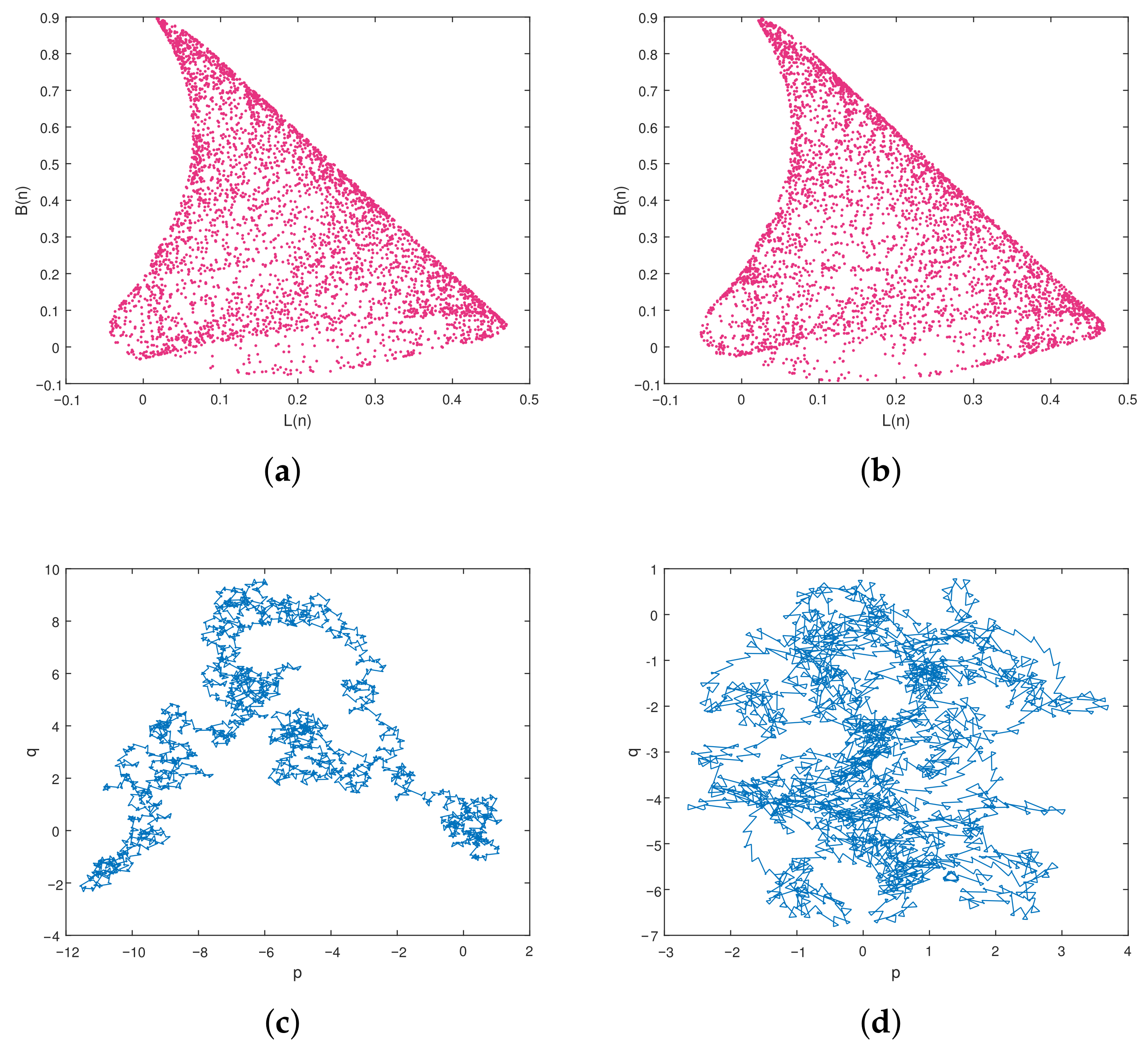

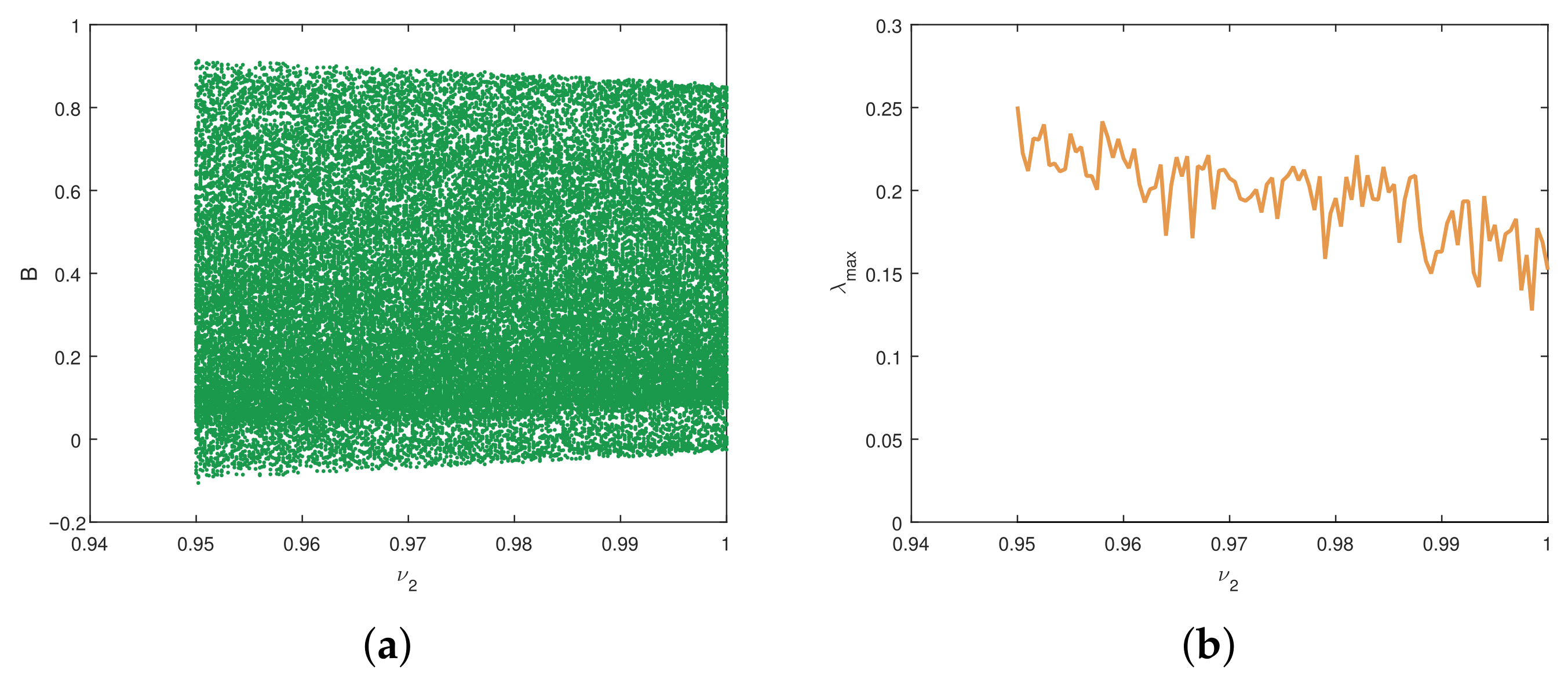


Disclaimer/Publisher’s Note: The statements, opinions and data contained in all publications are solely those of the individual author(s) and contributor(s) and not of MDPI and/or the editor(s). MDPI and/or the editor(s) disclaim responsibility for any injury to people or property resulting from any ideas, methods, instructions or products referred to in the content. |
© 2025 by the authors. Licensee MDPI, Basel, Switzerland. This article is an open access article distributed under the terms and conditions of the Creative Commons Attribution (CC BY) license (https://creativecommons.org/licenses/by/4.0/).
Share and Cite
Zouak, I.; Alshanty, A.; Ouannas, A.; Mongelli, A.; Ciccarese, G.; Grassi, G. From Continuous Integer-Order to Fractional Discrete-Time: A New Computer Virus Model with Chaotic Dynamics. Technologies 2025, 13, 471. https://doi.org/10.3390/technologies13100471
Zouak I, Alshanty A, Ouannas A, Mongelli A, Ciccarese G, Grassi G. From Continuous Integer-Order to Fractional Discrete-Time: A New Computer Virus Model with Chaotic Dynamics. Technologies. 2025; 13(10):471. https://doi.org/10.3390/technologies13100471
Chicago/Turabian StyleZouak, Imane, Ahmad Alshanty, Adel Ouannas, Antonio Mongelli, Giovanni Ciccarese, and Giuseppe Grassi. 2025. "From Continuous Integer-Order to Fractional Discrete-Time: A New Computer Virus Model with Chaotic Dynamics" Technologies 13, no. 10: 471. https://doi.org/10.3390/technologies13100471
APA StyleZouak, I., Alshanty, A., Ouannas, A., Mongelli, A., Ciccarese, G., & Grassi, G. (2025). From Continuous Integer-Order to Fractional Discrete-Time: A New Computer Virus Model with Chaotic Dynamics. Technologies, 13(10), 471. https://doi.org/10.3390/technologies13100471





